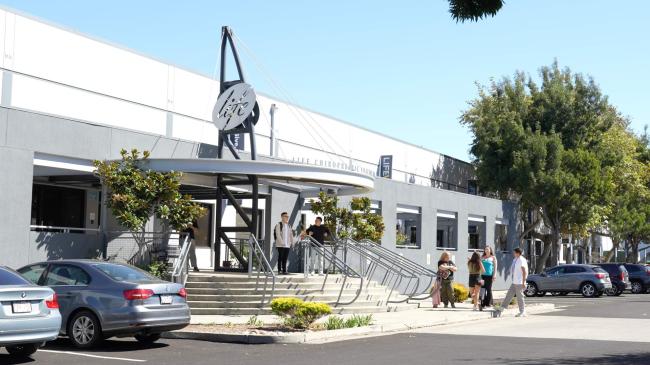This seminar will be an extension of the Sacrum and Pelvis Basic seminar, to include advanced adjusting protocols and Case Management of the Sacroiliac. Step by step Gonstead approach to adjusting the Pelvis (Sacrum and Ilium) using speed and leverage to be able adjust patients bigger than you! A deep dive into evaluating and identifying SI subluxations, learning to decide if to adjust the Sacrum or the Ilium. Some Sacrum and Ilium listings can be adjusted with a Push or with a Pull. Both ways will be taught for various listings. Discussion to help decide if a Push or a Pull would be best for certain patients and how to decide. Know when to adjust the ilium or sacrum and when to leave it alone.
Adjusting shouldn’t hurt: You or the Patient! Adjusting the cervical spine in the seated position, as developed by Dr. Clarence Gonstead, allows the flexibility to correct spinal mechanical dysfunctions in all three planes: extension, lateral bending and rotation. Dispel the myths of adjusting a patient in “tension” and learn to adjust when both the doctor and patient are relaxed and balanced so your adjustments feel like a “warm knife in butter”. Introducing an innovative way to learn adjusting beyond set-ups, thru dynamic “exercises” that make adjusting fun!
25001 Industrial Blvd.
Park by Student Entrance on Clawiter Road side of building, then look for signage directing you to the check-in area.
Hour 1: 9:00am-10:00am
Title: Evaluating the Pelvis
Topic/Categories: Physical Examination Procedures
Content: Discussion and demonstration of the most significant signs to indicate a particular Sacrum and/or Ilium subluxation. Emphasis will be placed on patient history, static palpation and motion palpation findings for particular SI listings. Xray findings will be reviewed. Special attention will be given to the Standing Gillet (handout provided) to assist the decision-making regarding Ilium or Sacrum using Gonstead “rules” and the Standing Gillet for motion palpation findings. Discussion about when to stop adjusting the Pelvis. Work will be done on a pelvic bench table and a plastic spine will be used for demonstration, comprehension and understanding.
Hour 2: 10:00am-11:00am
Title: Introduction to Gonstead Adjusting of the Sacrum and Ilium
Topic/Categories: Adjustive Technique
Content: A brief review of basic concepts and Fundamentals of Adjusting and how they relate to Side Posture Adjusting. Introduce the concept of learning to adjust by “exercises” versus “set-ups”. Principles of adjusting are: 1) Relaxation, Balance and Timing; 2) Adjusting Pre-load and Ramping; 3) Posture/Positioning, Center line and Balance. The first exercise will be Patient Placement and Doctor Position so that the doctor will be in position to effortlessly deliver a Pelvic Push adjustment. Sacrum Push adjustments, Involved Side Up will be covered the first hour. Work will be done on a pelvic bench table and a plastic spine will be used for demonstration, comprehension and understanding.
Hour 3: 11:00am-12:00pm
Title: Adjusting the Sacrum: Involved Side Up (cont.) and Involved Side Down • Topic/Categories: Adjustive Technique
Content: Continuation of the first hour but adding Sacrum Push moves with the Involved Side Down. Practice and repetition to become comfortable with adjusting the Sacrum Push Move with Involved Side Up and Involved Side Down. Sacrum Pull move will be introduced and variations for Involved Side Up and Involved Side Down. Work will be done on a pelvic bench table and a plastic spine will be used for demonstration, comprehension and understanding.
Hour 4: 12:00am-1:00pm
Title: Ilium Push Moves for PI and AS
Topic/Categories: Adjustive Technique
Content: Making a contact and Doctor Orientation for the PI and AS listings. Learning how to properly stabilize the lumbar spine so as not to compress the pelvis into the table. Developing a proper Pre-Stress and load on the patient in the direction of the thrust. Then how to deliver the thrust with smoothness and creating a momentum mechanism so the patient will receive the adjustment with less effort and force from the doctor. Work will be done on a pelvic bench table and a plastic spine will be used for demonstration, comprehension and understanding.
Lunch: 1:00-2:00pm
Hour 5: 2:00pm-3:00pm
Title: Adjusting complex Ilium Listings Push Moves
Topic/Categories: Adjustive Technique
Content: Continuation and repetition of Hour 3 with adaptations for the complex Pelvis lisings (PIEx, PIIn and ASIn). Learning how to deliver the Pelvic Push thrust with “torque” as necessary for the various Pelvic listings. Emphasis will be placed on using Line of Drive, Doctor Orientation and Torque for the pelvic adjustment. Work will be done on a pelvic bench table and a plastic spine will be used for demonstration, comprehension and understanding.
Hour 6: 3:00pm-4:00pm
Title: Ilium and Sacrum Pull Adjustments
Topic/Categories: Adjustive Technique
Content: Making a contact and learning how to use the doctor’s tibia for stabilization for simple pelvis listings Ex and IN and then Posterior Sacrum (P-R and P-L). Doctors will learn how orient themselves to the patient and how to Pre-load the joint to facilitate the adjusting hand action. Work will be done on a pelvic bench table and a plastic spine will be used for demonstration, comprehension and understanding.
Hour 7: 4:00pm-5:00pm
Title: Complex Ilium Pull Adjustments
Topic/Categories: Adjustive Technique
Content: Adjustments for complex Ilium listings (PIEx, ASEx and PIIn), using the doctor’s tibia and doctor’s orientation to stabilize the Lumbar spine. Continuation and repetition of Gonstead Ilium adjustments with the Push and Pull moves for simple and complex listings. Work will be done on a pelvic bench table and a plastic spine will be used for demonstration, comprehension and understanding.
Hour 8: 5:00pm-6:00pm
Title: Case Management and Difficult Cases
Topic/Categories: Adjustive Technique
Content: Discussion about the decision making of the doctor to choose either the Push or Pull moves for Ilium or Sacrum adjustments. Concepts and thought processes for managing Sacroiliac Joint problems. Several cases will be available for review and discussion. Doctors are invited to bring xrays and examination findings to discuss difficult cases. Cases and discussion will be presented on power point format.
Day 2 Cervical Chair Basic: 7/20/2025
Hour 1: 9:00-10:00am
Title: Introduction to Gonstead Cervical Chair Adjusting • Topic/Categories: Adjustive Technique
Content: Beginning discussion about “why” to adjust using Gonstead Cervical Chair. Getting ready to adjust. Learning to make a contact so that “No one gets hurt” (how to protect the doctor’s hand. How to place the patient on the chair and position the Doctor for leverage. Emphasis will be on relaxing the doctor and learning the 3 Universal Fundamental Rules of Adjusting. Doctors will be encouraged to change their paradigm of consideration from taking a patient to “Tension”, and instead Guiding the vertebra to a point of joint isolation, keeping their contact hand gentle and relaxed. Work will be done on the Cervical Chair.
Hour 2: 10:00am-11:00am
Title: The Basic Set-up; learning by “Exercises”
Topic/Categories: Adjustive Technique
Content: Getting a feel for a series of guiding motions (called “Exercises”) to isolate the vertebra being adjusted to a position where it is on the “edge” of moving, while keeping the rest of the spine in a relative neutral position. Emphasis will be placed on learning to “feel” the vertebra getting adjusted to be isolated and the spine above and below remaining neutral. This hour will be spent on the VP area: C6, C7 and T1. Work will be done on the Cervical Chair and a plastic spine will be used for demonstration and comprehension/understanding.
Hour 3: 11:00am-12:00pm
Title: Practice and Repetition
Topic/Categories: Adjustive Technique
Content: Practice and repetition of the “Exercises”, with variations for adjusting the middle to upper cervical segments (C2-C5) and T1/T2. Emphasis will be placed on learning to feel the translation of the segment being adjusted mostly in a P-A direction, with variations for lateral bending. Extra attention to coordinating the Stabilization Hand and Thrusting hands to deliver a precise adjustment. Work will be done on the Cervical Chair and a plastic spine will be used for demonstration and comprehension/understanding.
Hour 4: 12:00pm-1:00pm
Title: Adjusting Lamina and Transverse Process (T1-2) contacts
Topic/Categories: Adjustive Technique
Content: Why and how to make the Lamina and/or Transverse Process contacts. Variations in line-of-drive for Lamina/TVP contacts compared to Spinous Process contacts. Variations for C2 and T1/T2. Practice and Repetition with various partners. Work will be done on the Cervical Chair and a plastic spine will be used for demonstration and comprehension/understanding.
Hour 5: 1:00pm-2:00pm
Title: Drills to develop Cervical Chair technique
Topic/Categories: Adjustive Technique
Content: Demonstration and practice drills: 1) Speed Drill; 2) Spine and Towel Drill; 3) Stabilization Hand Drill; Cervical Chair Speeder Board. Practice and repetition to develop speed and power so the doctor understands that speed, leverage and power are the different elements of their Cervical Chair thrust. Work will be done on the Cervical Chair, a plastic spine and towel will be used to coordinate the thrusting and stabilization hands. Emphasis will be placed on learning to accomplish complex motor movements with both hands coordinated together. Specially designed Cervical Chair speeder boards will be used to further develop the coordination of the doctor’s two hands so they work independently of each other to complement the adjustment.
Credits
Life Chiropractic College West has received programmatic accreditation through the Council on Chiropractic Education and institutional/regional accreditation through WASC Senior College and University Commission (WSCUC).
*The following State and Province boards do not require an application when a program is sponsored by a college accredited by the Council on Chiropractic Education (CCE): CO, CT, DE, DC, ID, IL, IA, MD, MA, MI, MT, NE, NH, NJ, OR, RI, SC, UT, VT, VA, WA, WY, BC, NB, ON, QC. Life Chiropractic College West cannot guarantee that these licensing board(s) will accept any session of this offering. Life West urges licensees to familiarize themselves with the laws governing continuing education in the jurisdictions where they hold licensure.



 Facebook
Facebook X
X LinkedIn
LinkedIn Forward
Forward